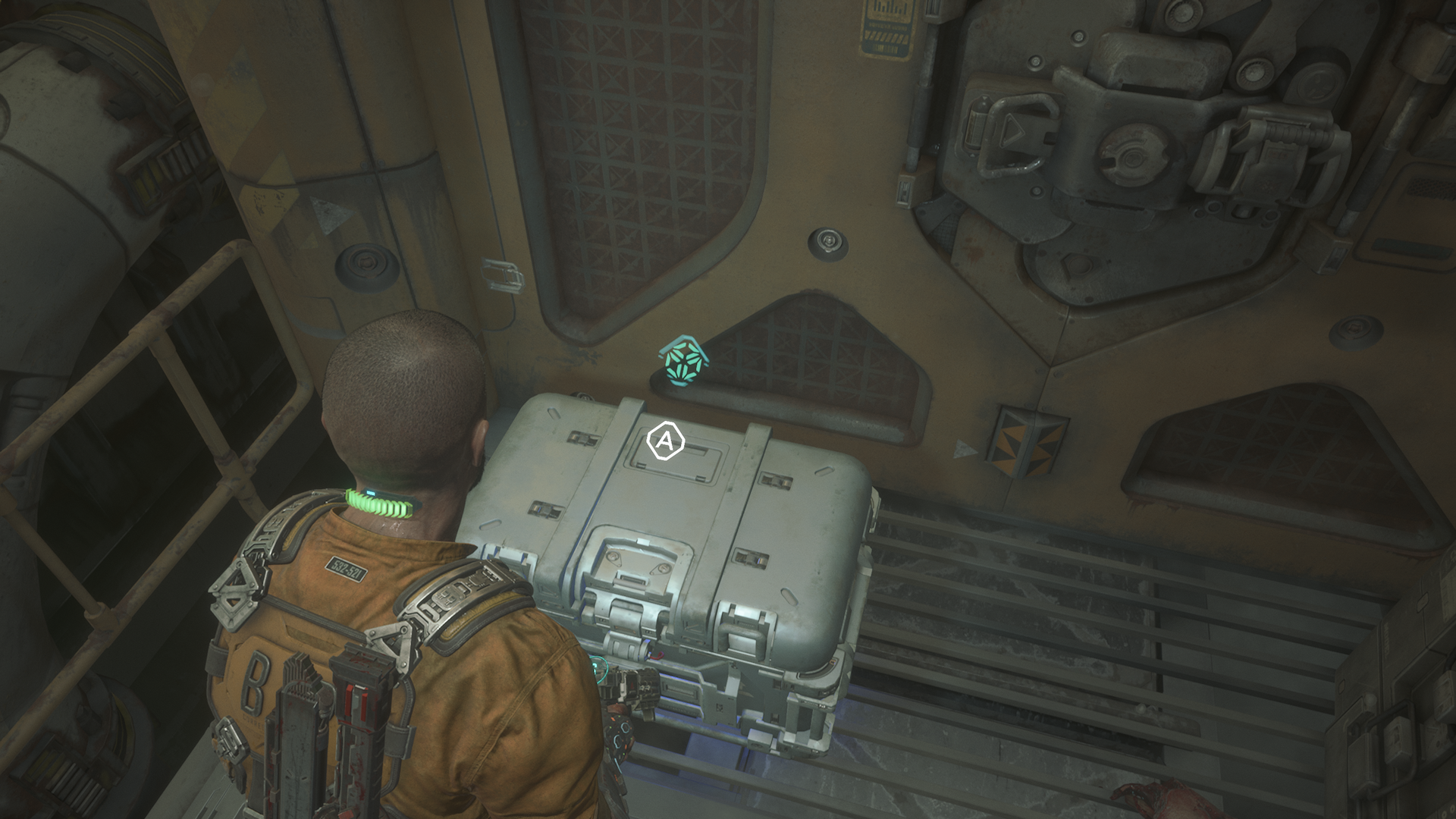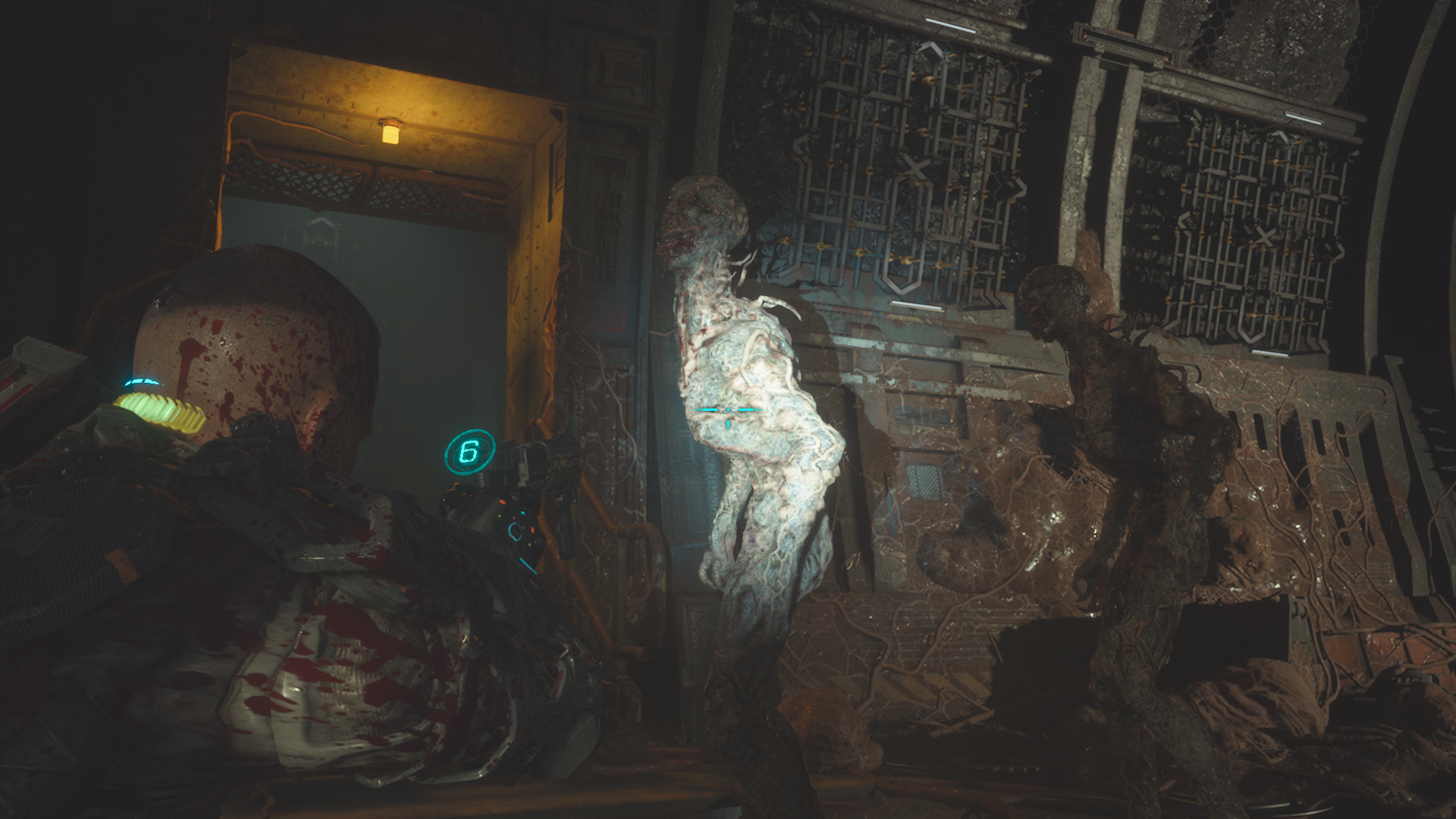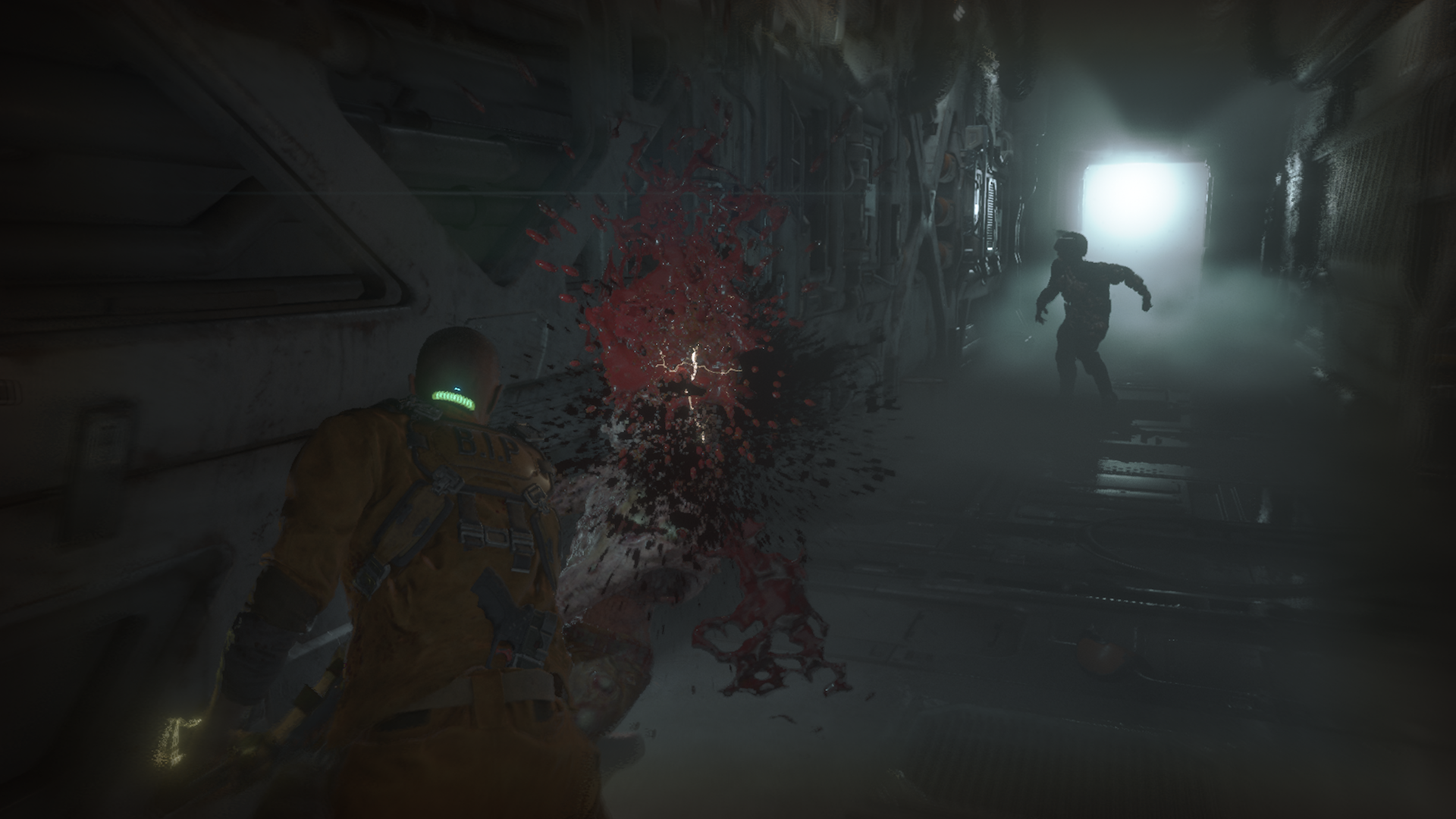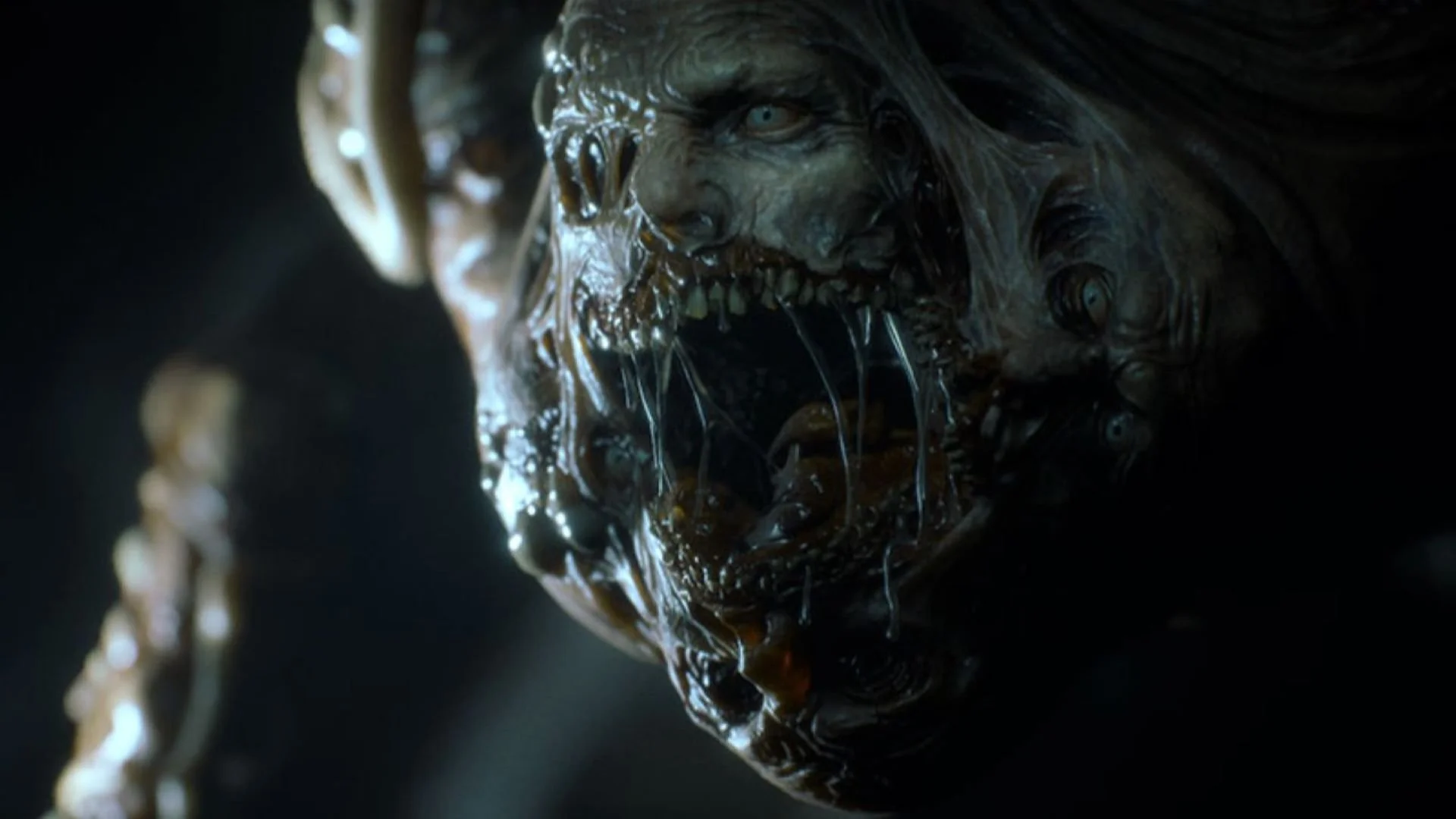The Callisto Protocol Review
Played on Xbox Series X
Developed by Striking Distance Studios
Released 2nd December 2022
For most, after playing the top of the top survival horror games like 'Resident Evil' or 'Silent Hill', they tend to flock to the other contemporaries in the genre that create as heavy a splash, from the modernised formula of 'Evil Within' to the 2010-capturing sci-fi of 'Dead Space'. This is my convoluted way of saying that I haven't played 'Dead Space' yet. While I admittedly should've dived into it before playing 'The Callisto Protocol', that Leaving Soon timer on Gamepass was ticking and I had to give this game a go while it remained "free". Outside of their obvious sci-fi survival horror correlations, the games also share a co-creator with Glen Schofield, having spearheaded both IPs. While many likened 'The Callisto Protocol' as a spiritual successor to the critically-acclaimed trilogy, the way 'Dead Space' would naturally seep out of Schofield's design into here, made it feel more like the game is stuck living in the shadows of 'Dead Space's success, especially with just how many elements are ripped out of the games and put here. From the diegetic HUD strapped to the protagonist's spine, to the spreading of an infection that triggers monsterfication loosely based on zombies' pop culture, and that's not including any other comparisons I would know had I played 'Dead Space' in advance.
Revealed at the Game Awards 2020, the trailers suggested a horrifying and visually impressive experience worthy of the legacy that predates it and backed the comments the team had made that it was aiming to be the scariest game on next-gen platforms. Since then, the £132m worth of game promotion was on point, further selling this idea, but behind the scenes told a slightly different story. Schofield would tweet a comment that bordered the line of glorifying crunch culture in the video game industry before having to retract and patch up that statement, and on release, the developers refused to make changes to accommodate Japan's CERO rating, which found the game too brutal. This at first seemed like a good thing as it meant they heavily leaned into that violent nature of the tale, but Schofield would reveal that the game had been released 3 months sooner than it had planned due to Krafton's pressure, leading to the removal of 4 bosses and 2 enemy types and as such, showed that complying with the CERO rating would've been a timed death sentence, especially with how the game did launch with performance issues. By February 2025, most developers had been laid off due to the game not meeting Krafton's fiscal expectations. Take your pick as to why you think this game didn't receive well, either because it didn't match the promises of a return to sci-fi horror glory, or because publisher enforcement slowly squished away the potential.
Story
The narrative here follows a traditionally predictable path that, because of how little the script utilises its actors, results in an equally plain story. To summarise, the story here follows Jacob Lee, a pilot transporting goods for the United Jupiter Company. One bad thing leads to the next, and the ship crash-lands on Callisto, a moon that holds the highest security level prison. You become its next inmate, before more bad things happen, and you're trying to break out under the guise of this new alien infection outbreak. The progression from trying to selfishly break out to then trying to selflessly take down the plans behind this outbreak is finely paced, but because the character dynamics here are so rushed and empty between each other, each of the characters' motives end up weakened, inadvertently making any plot twist or reveal come across as equally weak and almost predictable. The bonus lore files and audio logs scattered around are always intriguing in games like these as I do love me some narrative reasoning behind enemy and encounter design, but moments where they try to dive into other aspects of the game's world like the supposed terrorist group Outer Way, or the attacks on Europa, I couldn't help but not care as they didn't have any vital connections to the ongoing tale of breaking out of prison. However, by the time they did overlap with each other, it was too late, as I had already become too disinterested in the story to make any satisfying connections between the narrative dots.
Gameplay
The gameplay was beyond subpar. With a third-person, over-the-shoulder camera perspective, you'll engage in a mostly janky combat system that is slogged through repetition, poor enemy encounters and a void of nothingness in between these sections. The biggest problem with the game is how you fight. With your melee, you tap away at these health-chunked enemies, occasionally using the game's side-to-side dodging system. The dodging on paper is a cool concept, especially for one-on-one duels, but in execution, it sucks here. The dodging has nothing to do with the enemy's telegraphing and is more to do with not dodging in the same direction twice in a row, which'll happen automatically anyway, as long as you're drifting left or right while attacking. Besides this close-quarters dodging and basic attacks, there isn't more you can do. Yes, combo finishers can open up for a quick fire from your guns, and you can use the telekinetic glove, but as for the actual melee combat, it's paper-thin in its systems. And even then, it's not designed well.
The first major issue is how, if there is more than one enemy, this combat while be against you at all times. The camera zooms in too close to show you the other enemies, switching focus between enemies is infuriatingly clunky, and it's practically impossible to dodge everybody's attacks at the same time with the lack of a proper distance-covering dodge. The second problem feels like a cardinal sin of game design, with how there's no point to the combat by a certain point in the game. Ammo becomes abundant, you probably would've upgraded your glove to a point of spamming it effortlessly, and some enemies become too evasive and annoying to deal with just pure melee. It does make its insufferable design choices less apparent, but that's only because you're engaging with them much less.
Guns boringly lie on the standardised video game side, where your choices lie between pistol, shotgun and submachine gun behaviours, and how common the ammo can become shows just how ineffective they are. The last of value you have in your kit is the telekinetic glove. The glove of gravity. The Force. The GRP glove sounds awesome to use, and it is for its first few times you launch an enemy across (half) the room. But like everything else, it falls through a lack of depth as it boils down to throwing the biophages into instant-killing environmental hazards or launching explosive barrels. There's nothing else to them, and seeing as they become your only viable choice to get through the enemy encounters successfully, they quickly become stale. There are other elements here, like the survival horror staple of a limited inventory, but this game quite literally is a room-to-room combat test with nothing more to offer.
One thing I can heavily applaud it for is its violence. The brutality of dismembering enemies or watching your player character get ripped apart got a few "oh sh*t" moments out of me that helped forget the downsides of the rest of the game, but even this overstays its welcome as its commonality makes you quickly and subconsciously get desensitised to it.
Another aspect that started off good was the enemies. They're these vile creatures that slowly become cannon fodder, but then the game introduces a new aspect to them that gives them a saving grace before slumping back down again, and this happens repeatedly. Basic enemies become plain, the Rusher becomes a nuisance, the Blind's gimmick gets thrown out of the window with how underutilised the stealth is, the Blood Worm can suck a bag of dicks, and the Dangler is the most overused enemy variant in zombie games (FYI; it's the suicide bomber). At one point, the enemies had this evolutionary trait where they could transform if the player didn't quickly end them, which was a nice re-emergence of 'Resident Evil 5's best mechanic, but even this started slacking as it became more of a nuisance than a threat of terror.
There are 2 bossfights here as well, but one of them appears too often to be categorised as anything but a sub-boss (Two Head having a split attacking pattern was cool if it wasn't for the fact that it's health bar is longer than the game's campaign) and the other one is the final boss that is too meh to give it its own section. All you had to do was run away and shoot it before dodging one of the two attacks, with no option for a melee fight despite it being a missed opportunity, since this is one of the few times you can actually have a 1v1.
Overall, the game isn't abhorrently bad, fundamentally broken or dreadfully boring, despite all of the flaws I've listed. Its design is what lets it down, as none of its pieces were made to work in conjunction, making it just painfully meh. It doesn't incite fun or boredom from me, and I can get through the game with it fine, but this felt like barely getting the passing grade on an assessment with how untuned and plain it was, overstaying its welcome in its introduction.
Characters
There was some insane starpower behind the characters here, from Karen Fukuhara of 'The Boys' fame and 'The Force Unleashed's Starkiller Sam Witwer, to 'Transformers's Josh Duhamel, all making a mo-capped and voice-acted role here. While their performances with what they were given were good, from the facial mocap to the delivery of their lines, the issue at play is the script itself. Dialogue reactions felt out of place, like they weren't guided as to how the scene was supposed to play out, generalisation of archetypes and more stunt the potential of what could've been. The source material given to the actors makes the script feel like solid blocks of content that struggle to blend and instead have this spacey disconnect.
Atmosphere
The best aspect of this whole game is also what attracted so many people to try it out, and that is its sublime atmosphere. Visually, the game nails that graphical appeal that this generation of consoles promised. Sweat beads on player models, the viscous blood pouring out of enemies, the lighting accurately and scarily generating shadows, and so much of this is such a standout accomplishment. Even with all of these high-quality details to them, the performance never falters for it and with good it looks at time, it created this false sense of horror as, even though I knew there was nothing to be scared of gameplay-wise, the eerily vacant snow or the ransacked and bloodily-battered prison facilities did their best to convince me otherwise.
In terms of the soundtrack, it surprisingly also nails that suffocating terror that so many horror games fail to get right because of how basic and forgettable they sound. But with 'The Callisto Protocol', it genuinely was fantastic audibly. There's this unsettling, airy and desolate sound to the music that is amplified by the rumbling bass or the high-screeched noise lingering on in the background. The audio for the enemies, environments and weapons all do a solid job of bringing immersion to the player, it's just that the rest of the game refuses to do the same.
Story - 5/10
Gameplay - 4.5/10
Characters - 5/10
Atmosphere - 8.5/10
SUPBAR
Half-eaten, plain bagel of a game - digestible but nothing remarkable and a bit of an insult to consume when you know there are much better options on offer, and even if you have nothing else, this will barely suffice.




